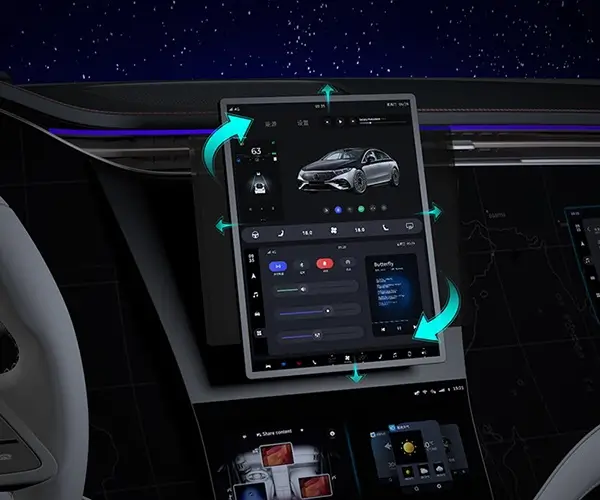How to Connect a Servo Motor: A Comprehensive Guide for Beginners and Enthusiasts
If you're stepping into the world of robotics, automation, or simply exploring DIY electronics, one of the most exciting components you'll encounter is the servo motor. Renowned for their precision and versatility, servo motors are crucial for controlling movement—be it in robotic arms, remote-controlled cars, antennas, or even animated sculptures. But before your servo-driven dreams can come alive, you need to master the art of connecting a servo motor properly.

In this guide, we'll walk through the foundational steps of connecting a servo motor, explain the essential components, and highlight best practices to ensure your project runs smoothly. Whether you're using a basic hobby servo or a more complex, programmable model, understanding wiring, power requirements, and control signals is essential.
What Is a Servo Motor?
First, a quick refresher. A servo motor is a rotary actuator that allows for precise control of angular position, velocity, and acceleration. Unlike simple DC motors that run continuously, servo motors operate on closed-loop control systems using feedback mechanisms. In hobbyist settings, they typically come as compact units with three wires: power, ground, and control signal.
Essential Components for Connecting a Servo Motor
Before diving into wiring steps, gather these items:
Servo Motor: Choose a compatible model based on your project needs. Power Supply: Usually 4.8V to 6V for hobby servos, but check your servo's specifications. Control Device: Microcontroller such as Arduino, Raspberry Pi, or other control boards. Connecting Wires: Usually male-to-female jumper wires. Breadboard (optional): For easy connections and testing. Resistors (if needed): For voltage division or signal conditioning.
Understanding the Wires
Most servo motors have three wires, color-coded for clarity:
Red (or Brown): Power (+V) Black or Brown (or Blue): Ground (GND) Yellow, White, or Orange: Signal (PWM control)
Some servos might have additional cables for torque or feedback, but for standard hobby servos, these three are the essentials.
Step-by-Step: Basic Wiring Setup
1. Power Supply Connection
Connect the servo's power wire (red) to the positive terminal of your power source. Ensure the power supply can provide sufficient current for your servo's load. A typical small servo operates comfortably from a 5V power supply, but check the specifications.
Important: Never power the servo directly from a microcontroller's 5V pin if it cannot handle the current demands. Use an external power source to avoid damage.
2. Ground Connection
Connect the servo's ground wire (black or brown) to both the negative terminal of your power supply and the ground (GND) pin on your control board.
This common ground ensures proper signal referencing, preventing communication issues.
3. Signal Connection
Connect the signal wire (yellow, white, or orange) to a PWM-capable pin on your microcontroller. On an Arduino, for example, pins labeled with a tilde (~) (like 9, 10, 13) support PWM signals.
Controlling a Servo with a Microcontroller
The magic of a servo motor’s movement is controlled by pulse-width modulation (PWM). A typical servo interprets pulses sent at a frequency of about 50Hz, with the duration of the pulse (usually between 1ms and 2ms) dictating the angle position.
1ms pulse: Approximately 0 degrees 1.5ms pulse: Approximately 90 degrees 2ms pulse: Approximately 180 degrees
Using a microcontroller like Arduino simplifies this process. The Arduino Servo library abstracts much of the complexity and provides straightforward commands to position your servo.
Connecting with an Arduino: An Example
Materials Needed:
Arduino Uno or equivalent Hobby servo motor External power supply (if needed) Jumper wires
Connection Diagram:
Arduino Pin Servo Pin Description 5V Red (Power) Power supply, check voltage compatibility GND Black or Brown (Ground) Common ground with Arduino Digital Pin 9 Yellow (Signal) PWM control date pin
Sample Code:
#include Servo myServo; void setup() { myServo.attach(9); // Attach servo to pin 9 } void loop() { myServo.write(0); // Move to 0 degrees delay(1000); // Wait for 1 second myServo.write(90); // Move to 90 degrees delay(1000); myServo.write(180); // Move to 180 degrees delay(1000); }
Loading and running this code on the Arduino will vividly show the servo moving to different positions based on PWM signals.
Next Steps: Troubleshooting and Best Practices
Now that you understand the fundamental wiring and control basics, it’s important to be aware of common pitfalls and best practices to keep your project safe and functional. For example, always verify that your power supply can deliver enough current, avoid sudden voltage drops, and ensure proper grounding. When manipulating servo positions, gradual movements help prolong their lifespan.
Stay tuned for the second part, where we'll explore advanced wiring techniques, integrating servos into complex circuits, and recommendations for ensuring precise and reliable control over your servo motors.
Established in 2005, Kpower has been dedicated to a professional compact motion unit manufacturer, headquartered in Dongguan, Guangdong Province, China.




































